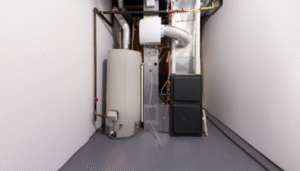There’s something deeply personal about water. You drink it, cook with it, bathe in it—it literally becomes part of you. Yet, for many Long Islanders, that once-simple act of turning on the tap has started to come with a little hesitation. The truth? The water running through those pipes isn’t as pure as people once believed. And it’s not paranoia—it’s awareness.
For years, residents have relied on what they assumed was “safe” groundwater. After all, it’s been filtered through Long Island’s sandy soil for centuries, right? But nature alone can’t keep up with modern life. Fertilizers, industrial waste, aging infrastructure—each has left a quiet footprint. And while you might not see it, you can taste it. That faint metallic note, the cloudy appearance, or even the chlorine smell—small clues whispering that something’s off.
When people talk about long island clean water, it’s not just about fancy filters or expensive systems. It’s about trust. It’s about wanting to feel confident that what you’re pouring into your child’s glass is genuinely clean. Because water isn’t just another household utility—it’s health, comfort, and peace of mind bottled into one everyday ritual.
A Tale Beneath the Surface
Long Island’s water story is both unique and fragile. The island’s entire drinking water supply comes from underground aquifers—massive natural basins that store and filter rainwater. On paper, it sounds idyllic. But as development expanded and agriculture intensified, contaminants slowly seeped down.
Nitrates from fertilizers, volatile organic compounds from industrial solvents, even PFAS—the so-called “forever chemicals”—have made their way into the same aquifers we depend on. And while water treatment plants work tirelessly, no system is perfect. Many residents are waking up to this quiet reality: clean water isn’t something you should assume anymore—it’s something you secure.
That’s why interest in long island water filtration systems has skyrocketed. From simple under-sink carbon filters to full-home reverse osmosis units, people aren’t waiting for public systems to fix everything. They’re taking matters into their own hands, one filter cartridge at a time.
The Shift Toward Home Filtration
It’s fascinating how a small shift in awareness can change entire routines. Ten years ago, buying bottled water felt like a luxury. Today, it’s a backup plan. More and more, households are turning to home filtration not just to improve taste but to regain control.
When you install a proper system, you’re not just reducing chlorine or lead—you’re making an investment in your health. You start noticing the difference almost instantly. The coffee tastes cleaner, your skin feels softer, even your dishes sparkle a little more. It’s subtle, but it adds up.
And there’s something strangely empowering about it too. Knowing that you’ve turned skepticism into action—that you’ve taken that invisible concern and built a quiet solution around it. You’re no longer crossing your fingers that someone else fixed the problem upstream; you’ve handled it right at the tap.
What Makes Long Island’s Water Different
People often ask, “Why is water long island such a big deal compared to other areas?” The answer lies in geography and dependence. Long Island doesn’t have lakes or rivers feeding its public water. Everything—literally everything—comes from beneath the ground. And once contaminants enter those aquifers, they don’t easily leave.
Add to that the island’s population density and proximity to industrial zones, and you’ve got a perfect storm. Town by town, quality can vary. Some communities might have clean results today and troubling reports next year. That uncertainty fuels the growing local movement toward independent water testing and personal filtration.
Even municipalities encourage residents to stay informed, check annual reports, and ask questions. Because no one can promise total purity forever—not when the environment itself is shifting beneath us.
From Awareness to Action
So where does that leave the average homeowner? The answer is surprisingly hopeful. This isn’t about fear—it’s about clarity. Once you know what’s in your water, you can address it.
There are simple test kits you can order online or through local labs to get a snapshot of your home’s water profile. From there, you can match filtration systems to your specific needs—carbon filters for taste, reverse osmosis for heavy metals, or UV filters for bacteria.
It’s not about overcomplicating things; it’s about tailoring a solution. And on Long Island, where one neighborhood’s well might differ from another’s, that level of personalization makes a real difference.
The Bigger Picture
Here’s the irony: Long Island has some of the most proactive environmental advocates in the country. Nonprofits, scientists, and even small business owners are constantly working to preserve and restore water quality. From coastal cleanups to stricter regulations, progress is happening—slowly but steadily.
But personal responsibility fills the gaps. It’s not about distrusting the system; it’s about complementing it. Think of it like locking your door at night—not because you expect trouble, but because it’s common sense.
Clean water shouldn’t be a privilege or a luxury. It’s a right. And when that right feels uncertain, there’s no shame in taking control.
The Bottom Line
If you live on Long Island, your water tells a story—of resilience, of progress, and of quiet concern. It’s easy to ignore what you can’t see, but once you taste the difference clean water makes, there’s no going back.
This isn’t a scare tactic; it’s an invitation. An invitation to pay attention, to ask questions, and to care a little more about what’s flowing through your faucet.
Because when it comes down to it, water isn’t just water. It’s the foundation of your health, your home, and your peace of mind. And that’s something worth protecting—not just for you, but for every family that calls Long Island home.


